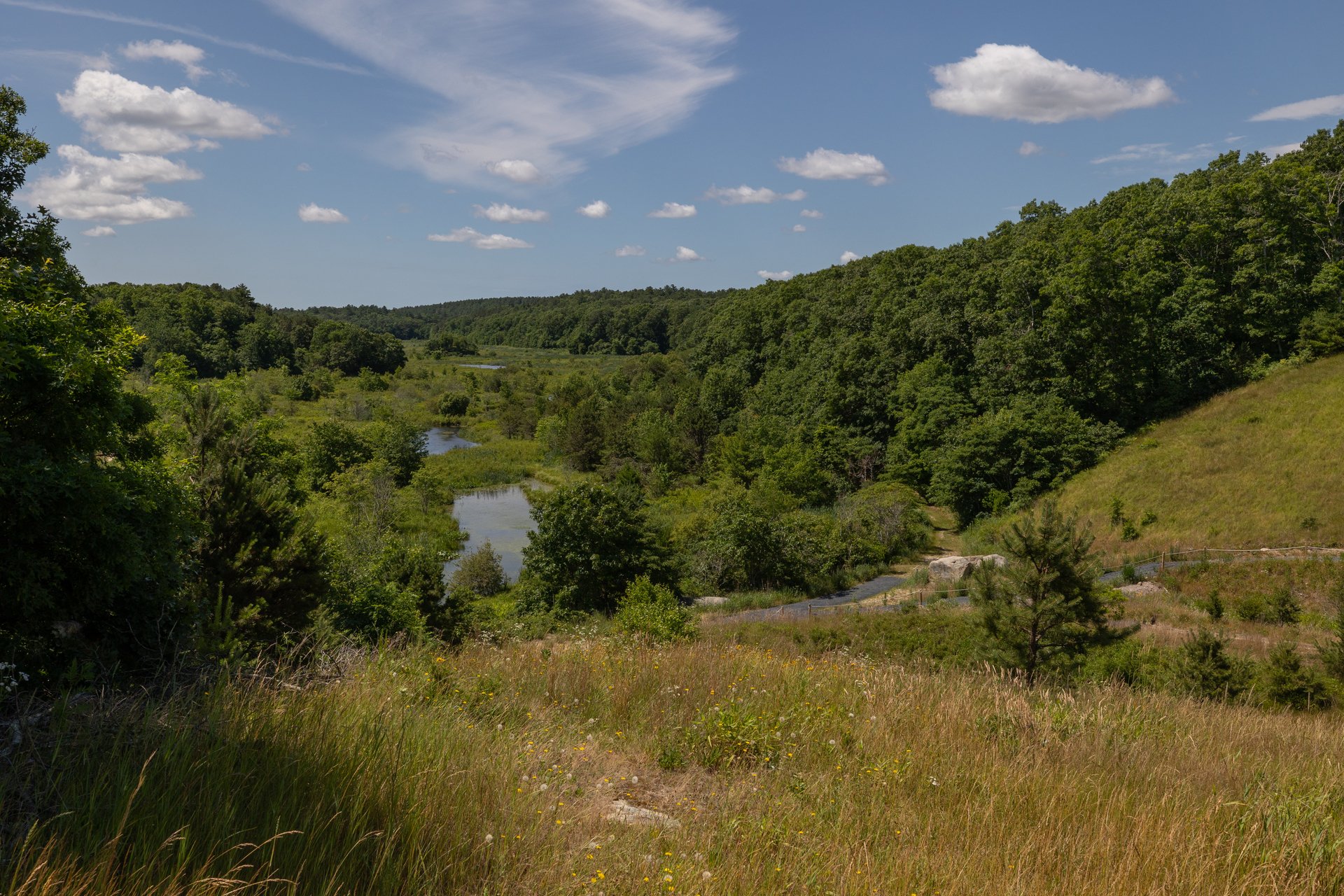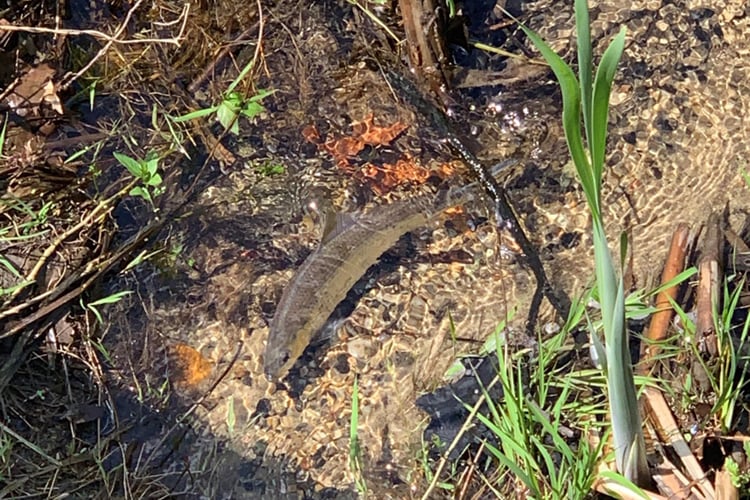Herring Count Project
Fish counts provide invaluable data to conservation efforts. The Tidmarsh Herring Count Project is focused on documenting the number of fish that make it up Beaver Dam Brook en route to Fresh Pond or elsewhere in the riverine system to spawn. This count provides the sanctuary with important data about the post-restoration return of nature to Tidmarsh.
About Fish at Tidmarsh
River Herring are anadromous (migratory) fish that consist of two species—Alewife (Alosa pseudoharengus) and Blueback Herring (Alosa aestivalis). They live in the ocean for most of their lives, but each spring the adults (3+ years) swim up rivers to spawn.
At Tidmarsh Wildlife Sanctuary, these species enter Beaver Dam Brook where the Alewife spawn in upstream spawning grounds (in this case, Fresh Pond) and the Blueback, who arrive somewhat later, spawn in the riverine system. Typically, the juvenile fish spend only a few months in this freshwater system and then return to the estuaries and, eventually, to the ocean to live as adults.
Brook Trout (Salvelinus fontinalis) is Massachusetts's only native trout species, and they require clear, cold, well-oxygenated water year-round. They are threatened by development, pollution, and climate change impacts that alter and remove suitable habitat. Mass Audubon and many community partners restored a section of cold-water stream that runs through the sanctuary, and we are hopeful that these conservation efforts will help bring back the trout population that once resided in this area.
How to Participate
New volunteers are required to attend a virtual training and one in-person training. Returning volunteers can choose whether to attend the virtual or in person training. In the virtual training, we'll walk you through the steps to identify these fish and conduct the counts. During your in-person training, we'll bring you to the two counting locations and review counting procedures.
The project's counting season typically runs from late March–May. During this period, volunteers complete 10-minute counts at each of Tidmarsh's two streams. Including walking out to the counting sites and back, each visit usually takes 45 minutes to an hour.
Educational Resources
If you are interested in standards-aligned curriculum—including remote learning options and field trips—please contact us.
MA Division of Marine Fisheries
- American Eels
- Anadromous Fish Restoration Leaflet
- Guide to Viewing River Herring in Coastal Massachusetts
- Herring Species Identification
- River Herring Guide
US Fish & Wildlife Service
Other Resources
- River Herring Factsheet (Herring Alliance)
- Sea Run Brook Trout (Association to Preserve Cape Cod)
- Restoration & Re-Opening of Town Brook in Plymouth, MA (NOAA)
- Tidmarsh River Herring Project Page (Living Observatory)
Current & Historical Partners
This project is made possible through a partnership of the following organizations:
- Living Observatory
- Town of Plymouth
- Massachusetts Division of Fish and Wildlife
- Mass Bays
- North & South Rivers Watershed Association (NSRWA)
- Responsive Environments Group at the MIT Media Lab
- TerraCorps




